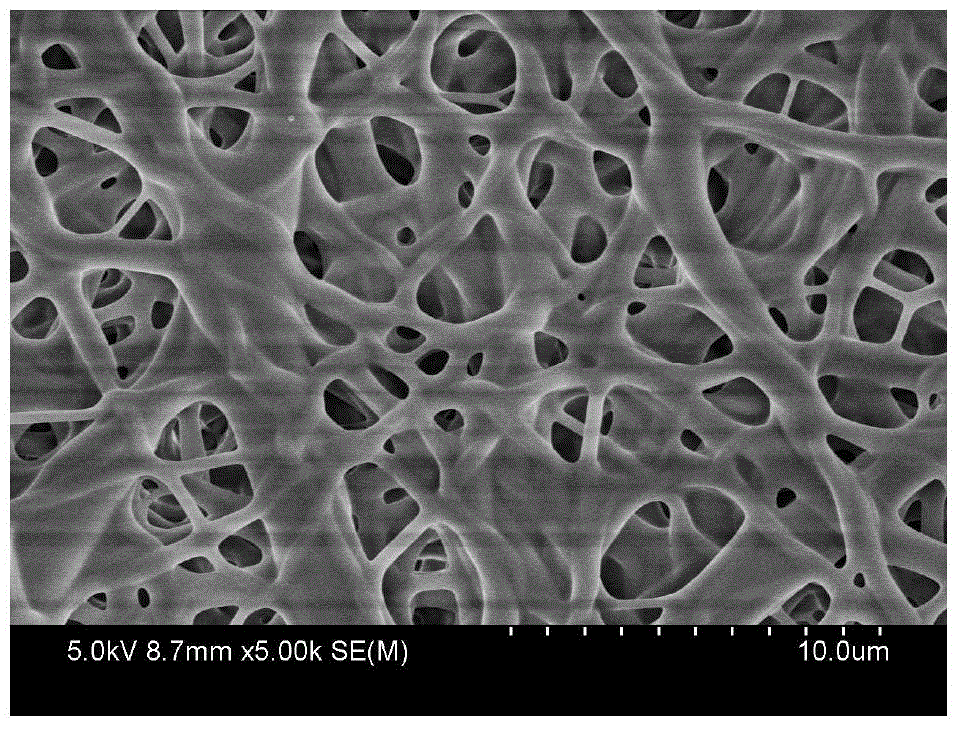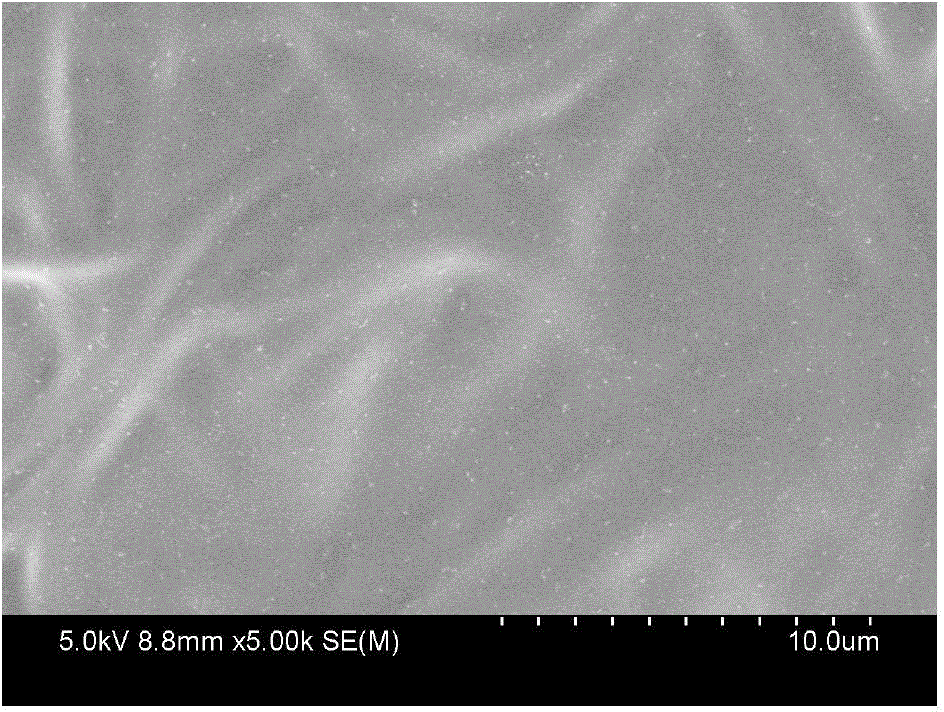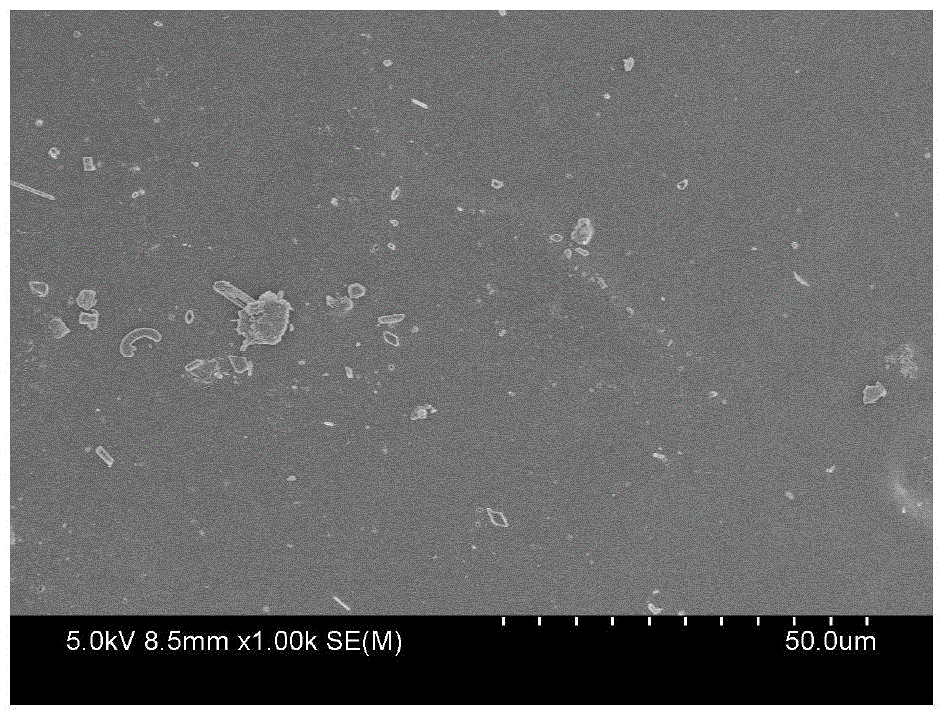Composite electrolyte membrane based on functional polymer and preparation method thereof, and lithium-sulfur secondary cell
A composite electrolyte membrane and polymer technology, applied in the field of rechargeable lithium-sulfur batteries, can solve problems such as the deterioration of cycle performance of lithium-sulfur batteries, and achieve the effects of solving technical problems of performance degradation, suppressing migration loss, and improving cycle stability.
- Summary
- Abstract
- Description
- Claims
- Application Information
AI Technical Summary
Problems solved by technology
Method used
Image
Examples
Embodiment
[0048] A lithium-sulfur secondary battery of the present invention includes a positive electrode, a negative electrode, an electrolyte and an organic electrolyte.
[0049] The electrolyte in this embodiment adopts the special composite electrolyte membrane of the present invention.
[0050] The positive electrode sheet of the positive electrode in this embodiment is generally composed of a current collector that conducts current and a positive active material coated on the current collector, a conductive material, an adhesive, and other additives; the positive active material in this embodiment is selected from a simple substance Sulfur; the conductive material is selected from a carbon-based conductive agent, such as one of conductive carbon black, acetylene black or graphite powder; the adhesive is selected from polyvinylidene fluoride; wherein, the mass percentages of the positive electrode active material, the conductive material, and the adhesive are respectively 70%, 19%...
PUM
| Property | Measurement | Unit |
|---|---|---|
| Thickness | aaaaa | aaaaa |
Abstract
Description
Claims
Application Information
 Login to View More
Login to View More - R&D
- Intellectual Property
- Life Sciences
- Materials
- Tech Scout
- Unparalleled Data Quality
- Higher Quality Content
- 60% Fewer Hallucinations
Browse by: Latest US Patents, China's latest patents, Technical Efficacy Thesaurus, Application Domain, Technology Topic, Popular Technical Reports.
© 2025 PatSnap. All rights reserved.Legal|Privacy policy|Modern Slavery Act Transparency Statement|Sitemap|About US| Contact US: help@patsnap.com



